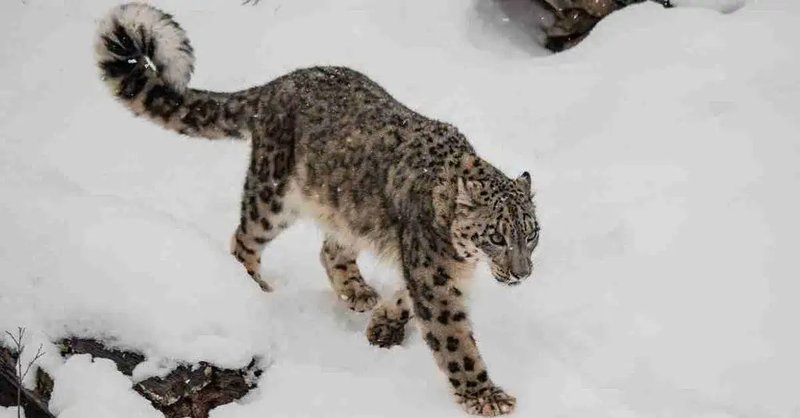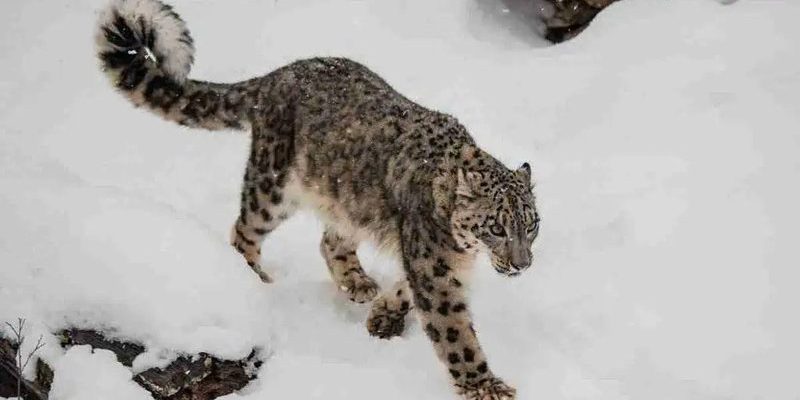
Snow leopards are more than just stunning felines of the mountains; they have unique ways of interacting with their world. Here’s a chance to explore what makes snow leopards tick. From their hunting strategies to their social behaviors, we’ll uncover the many facets of a snow leopard’s mind, giving you a fuller picture of this incredible animal.
Understanding Their Environment
Snow leopards roam some of the harshest terrains on Earth—steep, rocky mountains in Central Asia. These conditions demand not just physical prowess but also sharp cognitive skills. Picture a snow leopard navigating a narrow ledge or slipping silently between boulders. They need to be astute observers of their surroundings, ready to adapt swiftly.
These cats have evolved to thrive in high-altitude areas where prey is scarce. As a result, they’ve developed a rich understanding of their habitat. They know where to find food and how to evade threats. Their keen senses allow them to detect movements from afar, which is essential for hunting. This remarkable ability to assess their environment shows just how smart they really are.
Hunting Strategies: The Brain Behind The Prowess
When it comes to hunting, snow leopards are strategic thinkers. They employ various techniques that highlight their intelligence. Instead of just charging after prey, they often use stealth and patience. Imagine them lying low, blending in with the rocky landscape, waiting for the right moment. This isn’t just instinct; it’s a cognitive process where they evaluate the best angle to launch their attack.
Their most common prey includes ibex and blue sheep, animals that themselves are quite agile. Snow leopards use their environment to their advantage, often positioning themselves above their prey to launch a surprise attack. This ability to plan and execute a hunting strategy shows that snow leopards possess a level of problem-solving skill that many animals lack.
Social Behavior: Alone but Not Lonely
Snow leopards are primarily solitary creatures. You might wonder if this means they lack social intelligence. On the contrary! Their social behavior is quite intricate. While they enjoy their alone time, these cats do communicate with each other through vocalizations, body language, and scent markings.
For instance, during mating season, males will make loud calls to attract females, demonstrating an understanding of their social dynamics. They also use scent trails to communicate their presence and territorial boundaries. This nuanced form of interaction highlights their ability to navigate social structures even while preferring solitude.
Learning and Adaptability
Snow leopards display a noteworthy ability to learn from their experiences. In the wild, they face constant challenges, from finding food to avoiding larger predators. Each encounter contributes to their knowledge base, allowing them to adapt over time. This adaptability is a hallmark of intelligence.
For example, young cubs learn essential hunting skills from their mothers. They watch and mimic her behaviors, picking up techniques. This type of learning underscores the importance of experience in developing cognitive abilities. Unlike many animals that rely solely on instinct, snow leopards possess the flexibility to modify their behaviors based on what they observe.
Communication: More Than Meets The Eye
Snow leopards have developed a rich vocabulary of sounds to communicate. From hissing and growling to chuffing (a friendly greeting sound), these vocalizations serve different purposes. This complexity suggests a thoughtful approach to communication, reflecting their understanding of social interactions.
Body language plays a critical role as well. A flick of the tail, an arched back, or a subtle shift in posture can signal a range of emotions from curiosity to aggression. Being able to interpret these cues shows a level of emotional intelligence. This kind of non-verbal communication is vital for any species that lives in social groups, reinforcing their intelligence.
Conservation and Human Interaction
The cognitive abilities of snow leopards also come into play when considering their interactions with humans. As their habitats shrink and prey becomes scarcer due to climate change and human encroachment, these cats are forced to adapt or face dire consequences. Their intelligence is crucial in navigating these challenges, whether it’s finding new hunting grounds or avoiding populated areas.
Conservation efforts often include educating local communities about the importance of snow leopards. Understanding these animals’ behaviors and needs can foster coexistence rather than conflict. When people recognize the intelligence of snow leopards, they’re more likely to appreciate and protect them.
The Future of Snow Leopards: A Delicate Balance
Snow leopards face numerous challenges as their environments change. Their intelligence plays a key role in survival, but it’s a tough world out there. With human impacts on their habitats increasing, it’s essential for conservation efforts to take their cognitive abilities into account. Understanding how smart snow leopards are helps us develop strategies that support their survival.
Ensuring a future for these beautiful cats requires a collaborative approach, involving local people, scientists, and conservationists. The more we know about the intelligence and behavior of snow leopards, the better equipped we are to protect them. After all, a species that’s as smart as it is beautiful deserves a fighting chance.
In summary, snow leopards are not just icons of beauty; they are intelligent, adaptable, and skilled survivors of the wild. Their cognitive abilities and behaviors illustrate a complexity that deserves our respect and attention. So, the next time you think about these incredible cats, remember there’s more than meets the eye. Their intelligence is just one of the many reasons we should admire and protect them.

